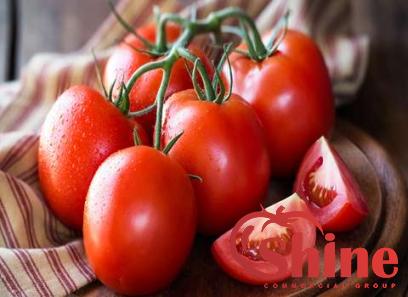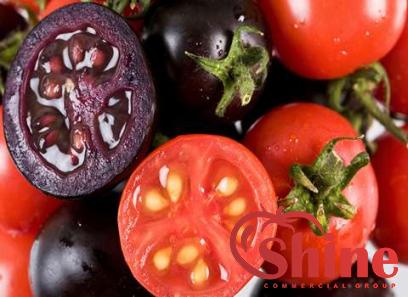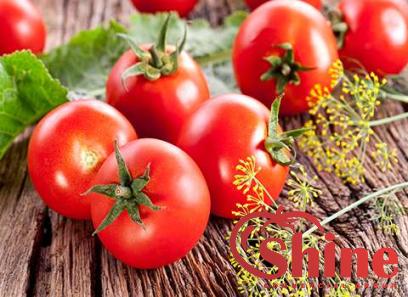Throughout the culinary world, few ingredients possess the versatility and flavor-enhancing capabilities of tomato paste, known as “pasta de tomate” in Spanish. This concentrated form of tomatoes is a staple in many kitchens, prized for its ability to add depth, richness, and a burst of umami to a wide variety of dishes. **Tomato Paste in Spanish Cuisine** In Spanish cuisine, tomato paste plays a central role in many traditional dishes. One of the most iconic Spanish dishes that feature tomato paste is the famous “paella,” a flavorful rice dish that often includes a sofrito made with tomato paste, onions, garlic, and other aromatics. The addition of tomato paste gives the paella its characteristic rich red color and enhances the overall depth of flavor. Another popular Spanish dish that relies on tomato paste is “albondigas,” or Spanish meatballs. The tomato paste is often used in the sauce that accompanies the meatballs, providing a savory and slightly sweet note that complements the richness of the meat. Additionally, tomato paste is an essential ingredient in Spanish stews like “fabada asturiana” or “cocido madrileño,” where it helps thicken the broth and infuse the dish with a robust tomato flavor.

.
 **Uses of Tomato Paste in Spanish Cooking** While tomato paste is readily available in most grocery stores, making your own “pasta de tomate” at home can be a rewarding experience. Start by selecting ripe, flavorful tomatoes – preferably plum tomatoes – and roasting them in the oven until they are soft and caramelized. Once the tomatoes have cooled, puree them in a blender or food processor until smooth. Transfer the tomato puree to a saucepan and simmer over low heat, stirring frequently to prevent sticking. As the mixture reduces, it will thicken and intensify in flavor, transforming into a concentrated tomato paste that can be used in a variety of Spanish dishes. In Spanish cuisine, tomato paste is not only used as a base ingredient but also as a secret weapon to elevate the flavor profile of many dishes. For example, a spoonful of tomato paste can add depth to a simple tomato sauce, transforming it into a rich and complex topping for pasta, pizza, or grilled meats. Similarly, adding a dollop of tomato paste to a pot of beans or lentils can imbue the dish with a savory umami kick that takes it to the next level. **Tips for Cooking with Tomato Paste** When using tomato paste in Spanish cooking, it’s essential to treat it as a flavor booster and not just a thickening agent. To maximize the impact of tomato paste in your dishes, consider sautéing it in a pan with olive oil before adding other ingredients.
**Uses of Tomato Paste in Spanish Cooking** While tomato paste is readily available in most grocery stores, making your own “pasta de tomate” at home can be a rewarding experience. Start by selecting ripe, flavorful tomatoes – preferably plum tomatoes – and roasting them in the oven until they are soft and caramelized. Once the tomatoes have cooled, puree them in a blender or food processor until smooth. Transfer the tomato puree to a saucepan and simmer over low heat, stirring frequently to prevent sticking. As the mixture reduces, it will thicken and intensify in flavor, transforming into a concentrated tomato paste that can be used in a variety of Spanish dishes. In Spanish cuisine, tomato paste is not only used as a base ingredient but also as a secret weapon to elevate the flavor profile of many dishes. For example, a spoonful of tomato paste can add depth to a simple tomato sauce, transforming it into a rich and complex topping for pasta, pizza, or grilled meats. Similarly, adding a dollop of tomato paste to a pot of beans or lentils can imbue the dish with a savory umami kick that takes it to the next level. **Tips for Cooking with Tomato Paste** When using tomato paste in Spanish cooking, it’s essential to treat it as a flavor booster and not just a thickening agent. To maximize the impact of tomato paste in your dishes, consider sautéing it in a pan with olive oil before adding other ingredients.
..
 This step helps caramelize the sugars in the tomato paste, intensifying its flavor and adding a subtle sweetness to your dish. Additionally, tomato paste pairs well with a variety of herbs and spices commonly used in Spanish cuisine, such as paprika, garlic, cumin, and oregano. Experiment with different combinations to create your own signature dishes that highlight the rich, savory taste of tomato paste. **Health Benefits of Tomato Paste** Beyond its culinary uses, tomato paste also offers a range of health benefits. Tomatoes are packed with essential nutrients, including vitamins A, C, and K, as well as antioxidants like lycopene, which has been linked to a reduced risk of certain types of cancer. By using tomato paste in your cooking, you can increase your intake of these beneficial nutrients and enjoy the unique flavor profile it brings to your dishes. In conclusion, tomato paste, or “pasta de tomate,” is a versatile and essential ingredient in Spanish cuisine. Whether you’re making traditional dishes like paella and albóndigas or experimenting with your own creations, tomato paste can elevate the flavor profile of a wide range of dishes. With its rich, concentrated taste and health benefits, tomato paste is a must-have pantry staple for any home cook looking to add a touch of Spanish flair to their culinary creations. **Exploring the Culinary World with Tomato Paste** The beauty of tomato paste lies in its ability to transform ordinary dishes into extraordinary culinary creations. In Spanish cuisine, the versatility of tomato paste knows no bounds, as it can be used to enhance everything from soups and stews to sauces and marinades. By incorporating tomato paste into your cooking repertoire, you open the door to a world of rich, savory flavors that will delight your taste buds and impress your family and friends. One of the simplest ways to showcase the flavor of tomato paste is by making a classic Spanish tomato sauce. Start by sautéing onions and garlic in olive oil until fragrant, then add a generous spoonful of tomato paste and cook it for a few minutes to deepen its flavor. Pour in a can of crushed tomatoes, season with salt, pepper, and your favorite herbs, and let the sauce simmer until it reaches the desired consistency.
This step helps caramelize the sugars in the tomato paste, intensifying its flavor and adding a subtle sweetness to your dish. Additionally, tomato paste pairs well with a variety of herbs and spices commonly used in Spanish cuisine, such as paprika, garlic, cumin, and oregano. Experiment with different combinations to create your own signature dishes that highlight the rich, savory taste of tomato paste. **Health Benefits of Tomato Paste** Beyond its culinary uses, tomato paste also offers a range of health benefits. Tomatoes are packed with essential nutrients, including vitamins A, C, and K, as well as antioxidants like lycopene, which has been linked to a reduced risk of certain types of cancer. By using tomato paste in your cooking, you can increase your intake of these beneficial nutrients and enjoy the unique flavor profile it brings to your dishes. In conclusion, tomato paste, or “pasta de tomate,” is a versatile and essential ingredient in Spanish cuisine. Whether you’re making traditional dishes like paella and albóndigas or experimenting with your own creations, tomato paste can elevate the flavor profile of a wide range of dishes. With its rich, concentrated taste and health benefits, tomato paste is a must-have pantry staple for any home cook looking to add a touch of Spanish flair to their culinary creations. **Exploring the Culinary World with Tomato Paste** The beauty of tomato paste lies in its ability to transform ordinary dishes into extraordinary culinary creations. In Spanish cuisine, the versatility of tomato paste knows no bounds, as it can be used to enhance everything from soups and stews to sauces and marinades. By incorporating tomato paste into your cooking repertoire, you open the door to a world of rich, savory flavors that will delight your taste buds and impress your family and friends. One of the simplest ways to showcase the flavor of tomato paste is by making a classic Spanish tomato sauce. Start by sautéing onions and garlic in olive oil until fragrant, then add a generous spoonful of tomato paste and cook it for a few minutes to deepen its flavor. Pour in a can of crushed tomatoes, season with salt, pepper, and your favorite herbs, and let the sauce simmer until it reaches the desired consistency.
…
 This versatile sauce can be used as a base for pasta dishes, drizzled over grilled vegetables, or spooned onto crusty bread for a simple yet delicious appetizer. For a heartier meal, consider adding tomato paste to a traditional Spanish bean stew. Start by sautéing onions, bell peppers, and chorizo in olive oil until they are softened and fragrant. Add soaked and cooked beans, along with a spoonful of tomato paste, smoked paprika, and a bay leaf. Let the stew simmer on low heat until the flavors meld together, creating a robust and comforting dish that is perfect for chilly evenings. **The Art of Preserving Tomato Paste** While tomato paste is readily available in cans and tubes at the grocery store, making your own tomato paste at home can be a rewarding and cost-effective alternative. By preserving ripe tomatoes at the peak of their season, you can enjoy the vibrant taste of summer all year round. To make homemade tomato paste, start by blanching and peeling ripe plum tomatoes, then puree them in a blender or food processor until smooth. Transfer the tomato puree to a baking sheet lined with parchment paper and spread it into a thin, even layer. Place the baking sheet in the oven on the lowest setting and let the tomato puree slowly dehydrate for several hours, stirring occasionally to ensure even drying. Once the paste has thickened and darkened in color, transfer it to a clean jar and store it in the refrigerator for up to a month, or freeze it for longer-term storage. **Tomato Paste: A Flavorful Journey** In the vibrant tapestry of Spanish cuisine, tomato paste stands out as a rich, savory thread that weaves its way through countless dishes, adding depth, complexity, and a touch of sunshine to every bite. Whether you’re simmering a pot of Spanish rice, tossing pasta in a luscious tomato sauce, or slathering meatballs in a velvety red glaze, tomato paste is there to elevate your culinary creations to new heights. So next time you’re in the kitchen, reach for that can or jar of tomato paste and let its bold, robust flavor inspire your cooking. With a dollop here and a swirl there, you’ll unlock a world of possibilities that will delight your senses and transport you to the sunny shores of Spain with every bite. Embrace the magic of tomato paste in Spanish cuisine, and embark on a flavorful journey that celebrates the essence of good food, good company, and the simple joys of cooking.
This versatile sauce can be used as a base for pasta dishes, drizzled over grilled vegetables, or spooned onto crusty bread for a simple yet delicious appetizer. For a heartier meal, consider adding tomato paste to a traditional Spanish bean stew. Start by sautéing onions, bell peppers, and chorizo in olive oil until they are softened and fragrant. Add soaked and cooked beans, along with a spoonful of tomato paste, smoked paprika, and a bay leaf. Let the stew simmer on low heat until the flavors meld together, creating a robust and comforting dish that is perfect for chilly evenings. **The Art of Preserving Tomato Paste** While tomato paste is readily available in cans and tubes at the grocery store, making your own tomato paste at home can be a rewarding and cost-effective alternative. By preserving ripe tomatoes at the peak of their season, you can enjoy the vibrant taste of summer all year round. To make homemade tomato paste, start by blanching and peeling ripe plum tomatoes, then puree them in a blender or food processor until smooth. Transfer the tomato puree to a baking sheet lined with parchment paper and spread it into a thin, even layer. Place the baking sheet in the oven on the lowest setting and let the tomato puree slowly dehydrate for several hours, stirring occasionally to ensure even drying. Once the paste has thickened and darkened in color, transfer it to a clean jar and store it in the refrigerator for up to a month, or freeze it for longer-term storage. **Tomato Paste: A Flavorful Journey** In the vibrant tapestry of Spanish cuisine, tomato paste stands out as a rich, savory thread that weaves its way through countless dishes, adding depth, complexity, and a touch of sunshine to every bite. Whether you’re simmering a pot of Spanish rice, tossing pasta in a luscious tomato sauce, or slathering meatballs in a velvety red glaze, tomato paste is there to elevate your culinary creations to new heights. So next time you’re in the kitchen, reach for that can or jar of tomato paste and let its bold, robust flavor inspire your cooking. With a dollop here and a swirl there, you’ll unlock a world of possibilities that will delight your senses and transport you to the sunny shores of Spain with every bite. Embrace the magic of tomato paste in Spanish cuisine, and embark on a flavorful journey that celebrates the essence of good food, good company, and the simple joys of cooking.










Your comment submitted.